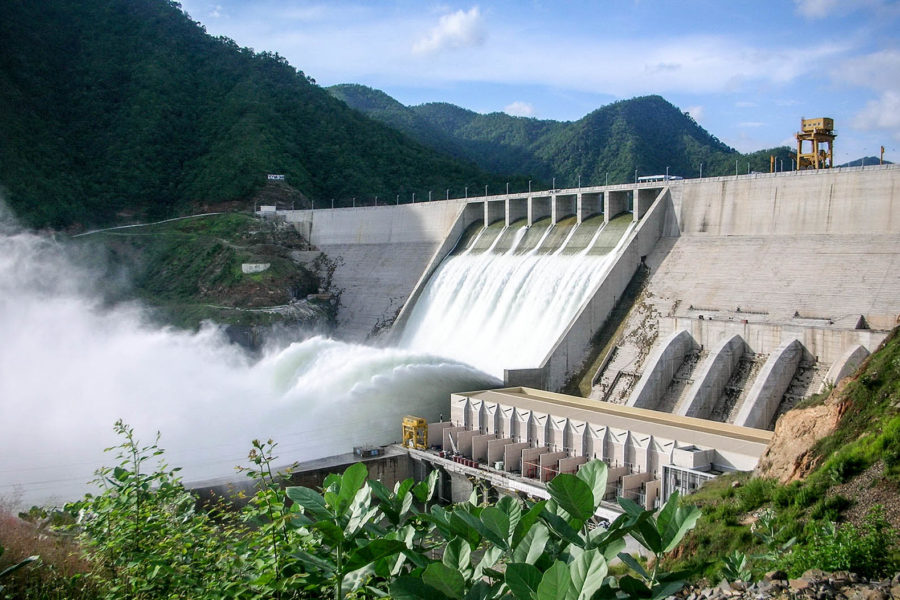
Hydro-power dams: the danger threatening Tibet and the southern Himalayan slopes
China alone is not to be blamed, however, for this mad rush to build hydro-power projects in the trans-Himalayan region to exploit the water resources of the mountains; with scant regard for the welfare of the people living in these hills.
Editorial, EOI, 25 February 2024 :The protest staged by Buddhist monks in the Sichan province of China against the construction of a massive dam is evidence how the cynic policy of governments across the countries in the trans-Himalayan region to exploit the hydro-power resources of these mountains is going against the vital interests of common people.
According to reports, Chinese security officials have arrested more than 100 Tibetan Buddhist monks and local people in the southwestern Sichuan province to quell protests against the construction of a massive dam that would submerge six Buddhist monasteries and force the relocation of two villages.
In a rare act of defiance, residents have taken to the streets of the township of Wangbuding in Dege County in the Garze Tibetan Autonomous Prefecture since February14 to oppose the plan to build the 2,240 MW Gangtuo hydropower station on river Drichu. The dam is located on the upper reaches of the Yangtze River, one of China’s most important waterways. On that day at least 300Tibetans gathered outside the Dege county town hall to oppose the construction of the dam defying strict controls on public gatherings and extensive surveillance by authorities in Sichuan and Tibet regions.
The detentions reportedly occurred in the Kardze Tibetan Autonomous Prefecture in Sichuan, an area with a large population of ethnic Tibetans. Videos of protests showed monks prostrating before the officials, pleading with them not to resort to demolition when they inspected Yena and Wonto monasteries in preparation for their destruction.
The Wonto Monastery preserves ancient murals that date to the 13th century. The Wonto Monastery was severely damaged during China’s Cultural Revolution. However, locals preserved its ancient murals and began rebuilding the monastery in 1983.China alone is not to be blamed, however, for this mad rush to build hydro-power projects in the trans-Himalayan region to exploit the water resources of the mountains; with scant regard for the welfare of the people living in these hills.
One may recall the disturbances the Tawang town in Arunachal Pradesh in India witnessed in March 2016 over the construction of a proposed dam on the river Tawang.
On that day, two people were killed in police firing, one of them a monk, a prominent anti-dam activist, a lama of Tawang monastery; though the excuse of the arrest was different, something to do with the dynamics within the monastery. One may also recall the recent catastrophe Sikkim has witnessed: the Glacial Lake Outburst Flood in river Teesta on the night of October 3 that killed many and spelled disaster.
The reason why the flood took such a devastating magnitude was that it washed away the dam of a large hydro-power project at Chungthang in north Sikkim, located not far from the South Lhonak Lake where the flood originated. The difference between the situation in Tawang and the Sichuan province in Tibet is that while the dam project in Tawang has been shelved following the protests, in China the authorities have steamrolled the protests and are going ahead with the construction of the project
.It is a matter of great concern for India as well as Bangladesh that China is building the biggest hydroelectric dam in the world over river Brahmaputra in Tibet, close to the Arunachal Pradesh border. No one is sure what the impact of this dam will be downstream, in Arunachal Pradesh and Assam in India and in large parts of Bangladesh.

0 Response to "Hydro-power dams: the danger threatening Tibet and the southern Himalayan slopes"
Post a Comment
Disclaimer Note:
The views expressed in the articles published here are solely those of the author and do not necessarily reflect the official policy, position, or perspective of Kalimpong News or KalimNews. Kalimpong News and KalimNews disclaim all liability for the published or posted articles, news, and information and assume no responsibility for the accuracy or validity of the content.
Kalimpong News is a non-profit online news platform managed by KalimNews and operated under the Kalimpong Press Club.
Comment Policy:
We encourage respectful and constructive discussions. Please ensure decency while commenting and register with your email ID to participate.
Note: only a member of this blog may post a comment.